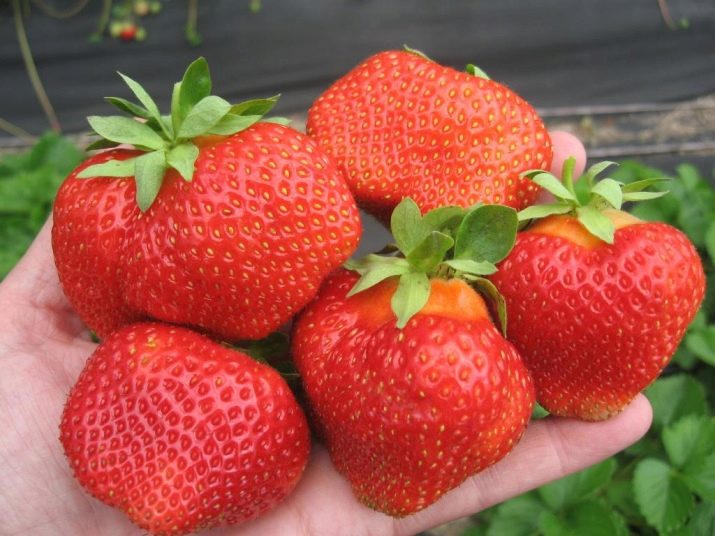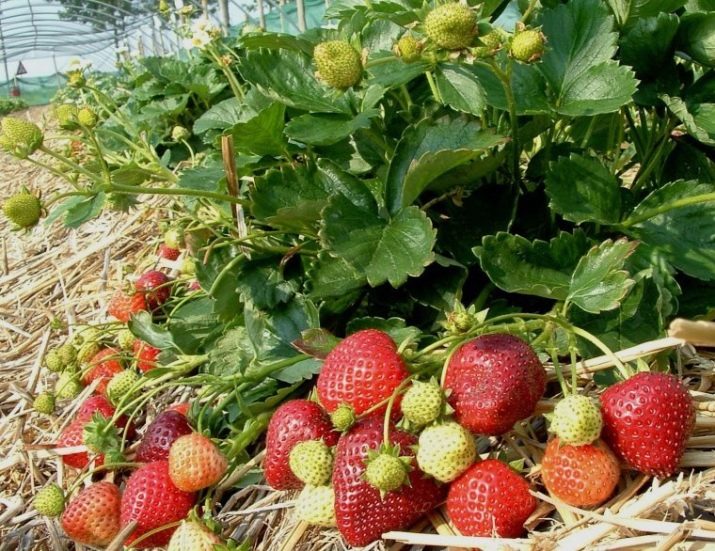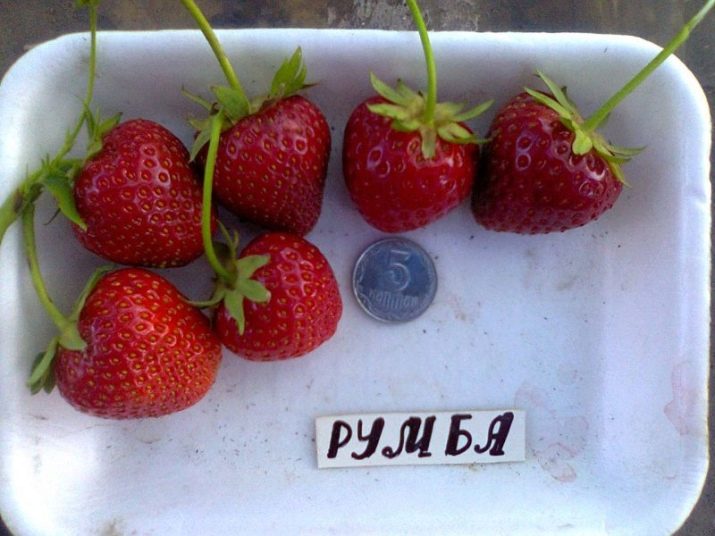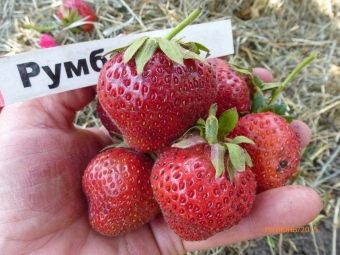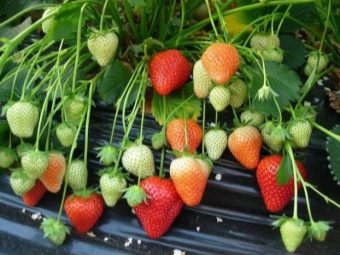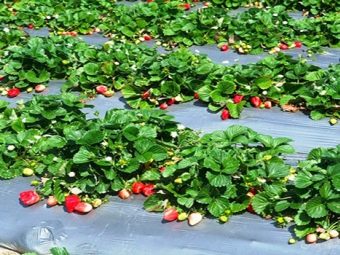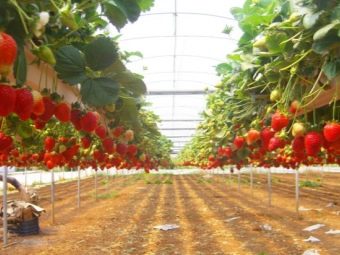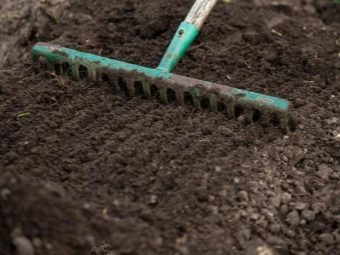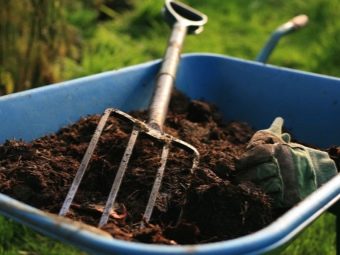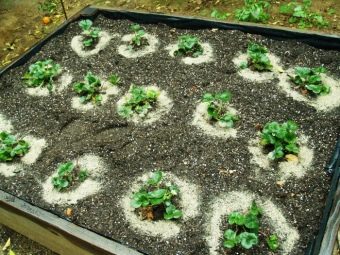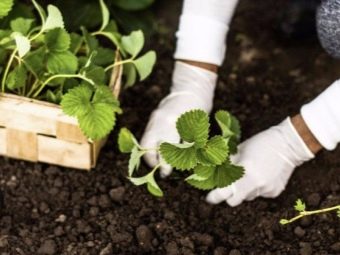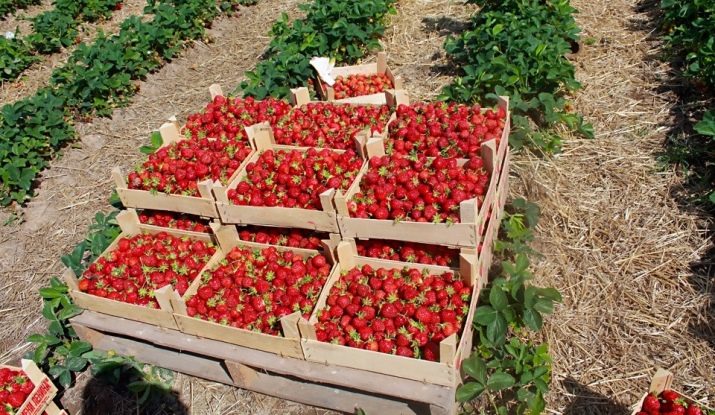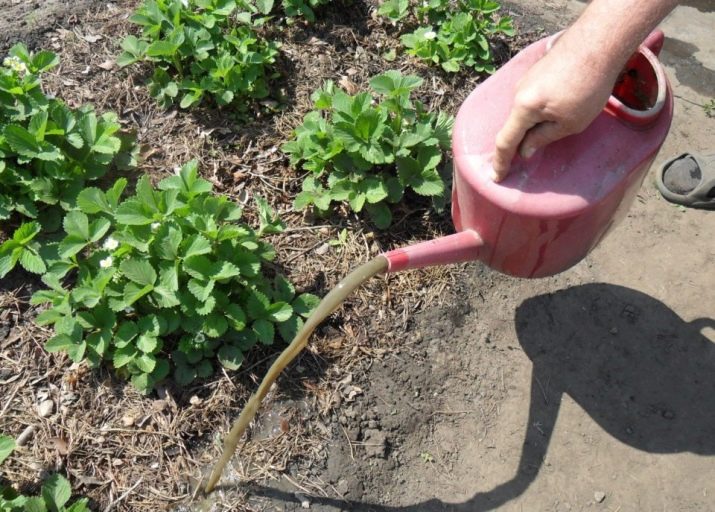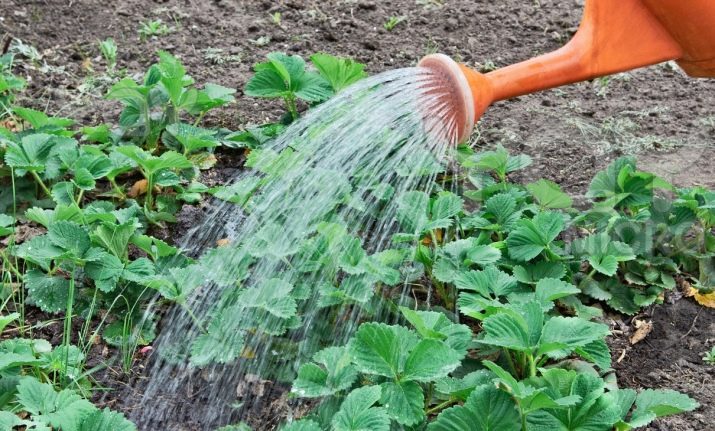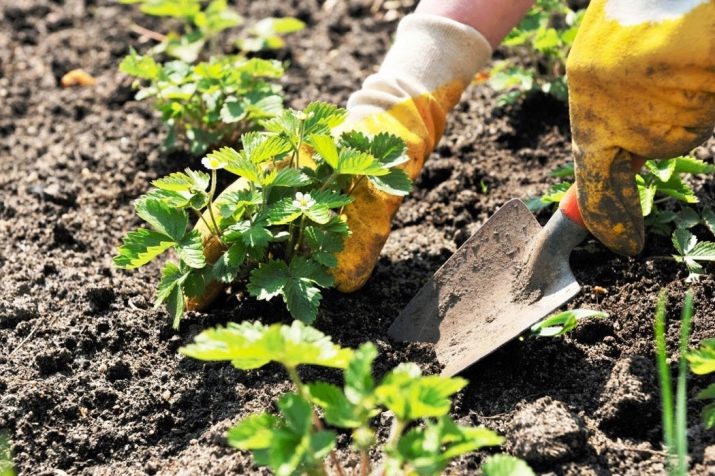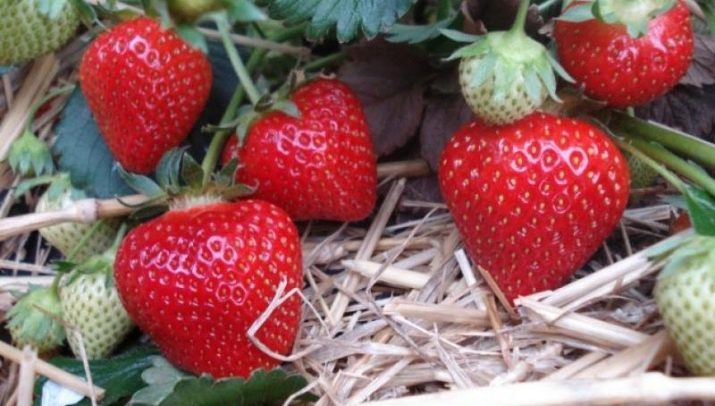Strawberry "Rumba": description of the variety and recommendations for growing

Many gardeners are watching the new varieties of berry crops, which are intended for sale and are characterized by yield, and do not get sick. Among these innovations can be noted strawberry variety "Rumba", which was bred in Holland.
Variety description
Strawberries of this variety have high commercial value. The berries are perfect in appearance, appetizing and tasty. They can be easily transported, and from the site where the plant grows, to obtain large yields. All this makes the culture most in demand in industrial cultivation.
"Rumba" belongs to the early varieties, the berries have a beautiful shape and good taste. They are large, well kept. Frost resistance is also an advantage. This makes it possible to grow the plant even in the northern regions, but usually the variety grows in the Primorsky Territory.
Strawberries of this variety are intended for open soil, but can be grown in greenhouses if necessary. Strawberry begins to bear fruit at the beginning of summer. These dates may shift, depending on weather conditions in the region. In the greenhouse, the crop ripens earlier and bears fruit for a long period, which makes it possible to harvest large yields in one season. The maximum number of fruits can be collected from the site in the second year after planting seedlings.
On average, from one bush collect up to 400 grams of berries. To do this, you only need to properly care for and feed the bushes, monitor their health and perform other agricultural procedures.
Characteristic berries of this variety attracts gardeners. They are beautiful in appearance and have a rounded conical shape. A feature of the variety is the fact that the berries ripen evenly, and by the time of harvest they are all the same size.
One berry can weigh up to 30 grams. If you do not harvest in time, the berries eventually decrease in size. The flesh is pleasant to the taste, sugary, with a slight sourness. The aroma is saturated.
Strawberry is resistant to most diseases, including:
- late blight;
- anthracnose;
- rotting
But at the same time this variety is recommended to protect from rot.
Advantages and disadvantages
Among the advantages of strawberries in this class include:
- the harvest is formed by the “bouquet” type;
- berries of dense structure;
- fruits are beautiful in appearance and long stored;
- big bush;
- all berries are about the same in weight and shape;
- powerful root system.
The disadvantages include the fact that the sugar content of the variety and the type of berries depend on external factors, such as timely watering and fertilization.
If you need to buy seedlings, it is worth remembering that the right to spread the culture belongs to the originators, and therefore it is legal to produce and sell this berry only with a license, such material has a rather high cost. But at the same time he is distinguished by good health and quickly takes root in the areas.
After the initial testing of this crop, it turned out that the variety is winter-hardy, and it can successfully endure cold for a long period, which allows strawberries to remain even during long winters. The variety is bred mainly for continental regions, which makes this plant ideal for planting in open areas.
In greenhouses, the crop is sprouting well, too, and shows excellent fruiting results. The only disadvantage when grown in greenhouses is that the berries will have a less solid and looser structure. To avoid these troubles It is recommended to maintain an appropriate climate in the greenhouse, water the plant in a timely manner and feed. Also worth harvesting in the morning.
Due to these characteristics of strawberries, it is a promising plant for growing in many regions of Ukraine, Belarus and Russia. The plant is able to grow in regions where frosts fall to -20 degrees and at the same time the snow layer reaches 50 cm.
Landing
This variety is grown both in greenhouses and in the open field.In the latter case, it is recommended to plant in the autumn. Seedlings planted at this time, successfully take root and root, and also get stronger before the season.
Landing is done in the evening or when there is no sun in the sky. In hot weather, you should not disembark, as the rays can damage the seedlings, and it will quickly wither. For strawberries it is recommended to choose a place protected from the winds, which is well illuminated by the sun.
The soil should be chosen fertile, rich in organic matter. The best soil for this variety will be black soil. The bush feels bad in clay soil, in this case the harvest will be small.
If necessary, you can land in the spring, if this allows the climate of the region. It is recommended to choose for planting the culture those areas where groundwater passes from the surface at a distance of at least 70 cm. It is also worth noting that the maximum yield of strawberries can be obtained only the first 2-4 years after planting. Next, you will need to transplant it to a new location.
For planting strawberries, you must first prepare the site. To do this, they dig it up and add humus at the rate of 10 kilograms per square meter. It is recommended to sprinkle the soil on top with calcium salts or superphosphate.
If you can not find humus, you can replace it with manure. Before planting, seedlings should stay in a cold place for 3 days. This will provide an opportunity to harden themselves and prepare for their stay in the open air.
When planting between the pits, a gap of 30 cm should be made, the same distance should be maintained between the rows. The pits should not be too deep, but the roots should be free in them. Before landing, you need to cut the leaves from the bushes.
The landing process itself is as follows:
- dig a hole;
- add water;
- put the roots in the pit;
- gently sprinkle with earth.
This will help the roots well and naturally settle down and finish. If the strawberries will be planted in the spring, it must be protected from possible frost. To do this, after landing the site is recommended to cover the film.
It is worth noting that the bushes are quite large in size, and therefore it is recommended to plant at the rate of 4 units per square meter. If such recommendations are violated, it will lead to a thickening of the site, a lack of sunlight in the roots and poor air circulation. As a result, strawberries will be deficient in beneficial components.
Care
To get the maximum yield, it is recommended to properly care for the plant.
Top dressing
This variety requires feeding in large quantities, especially during the period of the appearance of the berries, and therefore it is recommended to feed the soil where the crop grows on an ongoing basis. If you choose the fertilizer correctly, it will help increase and improve the quality of the berries and their size. It is recommended to choose potassium based fertilizers. Fertilizing begin to make at the beginning of flowering culture and continue until the ovaries form on the bushes.
When strawberries bloom, it is recommended to add humus to the site. To increase the number of inflorescences, you can spray the plant with boric acid at the rate of 1 spoon per 10 liters of water. Total such dressings should be 3 per season. If you follow all these recommendations, then on the site you can increase the yield by an average of 30%.
In the spring it is recommended to bring a nitroammofoska under each bush. This feeding can, if necessary, be replaced by bird droppings. Also in the shops you can buy special formulations for this culture. The composition of such funds is recommended to choose, depending on the region of growth of culture.
Watering
It should be made regularly, especially during periods when it is hot enough outside. After watering, it is recommended to loosen the soil and remove weeds. Watering usually begins to produce at the end of April, when the snow melted, and the moisture from the ground after the snow evaporated.After watering, it is also recommended to mulch the area where strawberries are grown. Fresh grass or straw is used as mulch.
The mulch is brought on a site until berries start to ripen. Watering is recommended at the rate of 10 liters of water per square meter of beds. If the summer is cool, then the frequency of watering is 10-13 days.
If the summer is hot, then the frequency of watering is reduced by 3 times. In August, you can water once or twice a week. And if the month was cold, then watering is done every 15 days.
Transfer
After the plant has lived a maximum of 4 years on one plot, it must be transplanted, since this variety depletes the soil.
For transplantation, it is recommended to choose healthy and intact bushes. Transplantation is carried out on an overcast day, it helps the plant to settle down better.
Gardeners reviews
Based on the foregoing, it can be concluded that the cultivation of strawberries in this variety is very profitable. Many gardeners (both beginners and professionals) speak fairly well of this crop, which is characterized by its yield, beautiful and tasty berries, which contributes to an increase in its value. If you correctly approach the cultivation of "Rumba" and also properly care for it, then as a result you can get quite high and stable yields. Fruits can be used for food or sell.
Experienced gardeners note that the variety tolerates weather conditions in regions with a continental climate, but at the same time growing Rumba in a cold and damp spring causes it to lose its qualities and appearance from lack of heat. Such moments must be taken into account when planting this variety on your site.
Review of garden strawberries "Rumba", see the following video.

